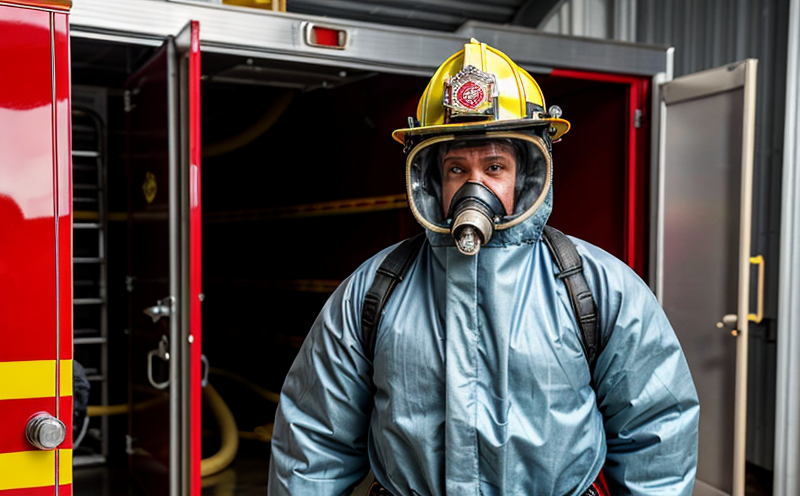EN 140 Firefighter Respiratory Protective Equipment Testing
The EN 140 series of standards are pivotal in the global fire safety sector, particularly for respiratory protective equipment (RPE) used by firefighters. The primary focus of this standard is to ensure that the RPE meets stringent requirements regarding protection factors and performance criteria under various test conditions. This service ensures compliance with these regulations, thereby enhancing firefighter safety during emergency operations.
The testing process involves a series of rigorous procedures designed to evaluate the effectiveness of respiratory protective equipment against smoke and toxic gases commonly encountered in fire environments. The standards mandate that RPE must provide adequate protection factors for particulate matter, vapors, and gases under defined conditions. This ensures that firefighters can safely perform their duties without compromising on health or safety.
The testing procedure itself is meticulous, involving multiple stages to ensure thorough evaluation. Firstly, the equipment undergoes a visual inspection to check for any defects or damages that might affect its performance. Following this, the equipment is subjected to a series of functional tests which include pressure testing and seal integrity checks. These tests are critical in ensuring that the equipment remains sealed under high-pressure conditions.
The most crucial part of the EN 140 testing involves the determination of protection factor (PF). This is achieved through a challenge gas test where a known concentration of smoke or toxic gas is introduced into the breathing zone of the firefighter. The equipment's ability to maintain a safe environment inside the mask is then measured based on how much protection it provides against the external hazards. This part of the testing is conducted in accordance with ISO 6585, which specifies the methods for determining PF.
Once the functional tests are completed, the equipment may be subjected to additional performance tests depending on its intended use. These can include thermal stability tests and chemical resistance tests if the RPE is expected to encounter specific hazards during firefighting operations.
The testing process also involves detailed documentation of all test procedures and results. A comprehensive report is prepared which includes recommendations for any improvements that might be necessary based on the test outcomes. This not only ensures compliance with international standards but also provides valuable insights for continuous improvement in RPE design and manufacturing.
Scope and Methodology
| Test Procedure | Description |
|---|---|
| Visual Inspection | Initial inspection of the equipment for any visible defects. |
| Functional Tests | Includes pressure testing and seal integrity checks. |
| Protection Factor Determination | Measurement of protection provided against smoke or toxic gases using challenge gas tests. |
| Additional Performance Tests | Optional tests for thermal stability and chemical resistance depending on the equipment's intended use. |
The methodology employed in this service is aligned with international standards such as EN, ISO, and ASTM. These standards provide a robust framework that ensures consistent and accurate testing results across different laboratories worldwide.
International Acceptance and Recognition
- The EN 140 series of standards are widely recognized in the fire safety sector, ensuring that respiratory protective equipment is safe and effective for use by firefighters.
- Compliance with these standards enhances the credibility and reliability of the equipment, making it suitable for international deployment.
Firefighters from various countries rely on EN 140-compliant RPE to ensure safety during operations. This standard is also recognized in other regions such as North America and Asia, further enhancing its global acceptance.
Environmental and Sustainability Contributions
- The testing process for EN 140 equipment ensures that the materials used are safe and do not pose risks to human health or the environment.
- The standards promote the use of sustainable practices in RPE manufacturing, contributing to overall environmental responsibility.
By adhering to these strict standards, we contribute positively towards reducing the carbon footprint associated with firefighter equipment. This service plays a vital role in promoting sustainable practices within the fire safety sector.





